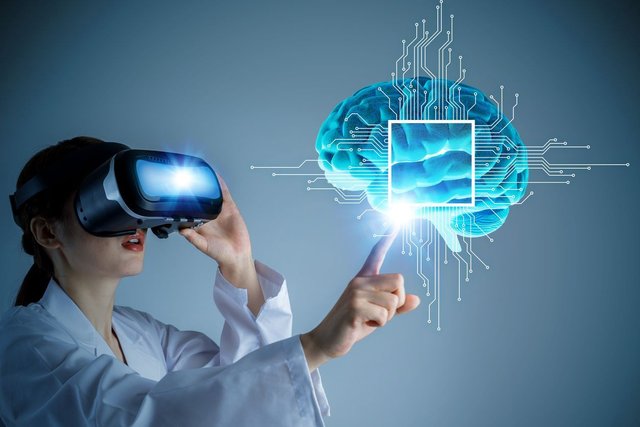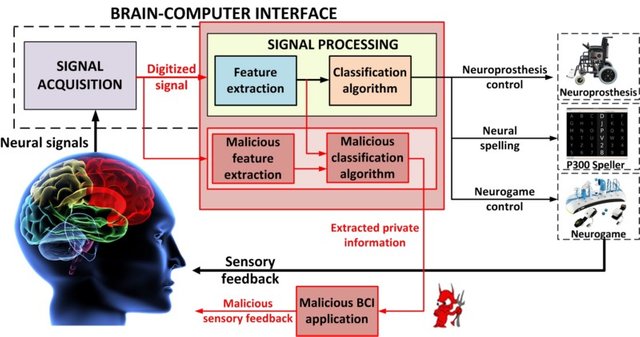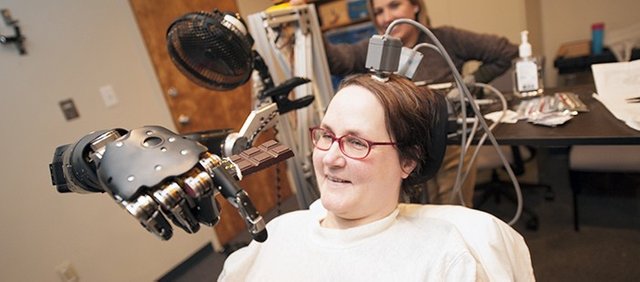The melding of humanity with the technology we have created has begun….

We are well on our way as Homo sapiens to turning into an animal groups that completely combines innovation with our natural bodies. Somehow or another, we've been getting at this for quite a long time effectively, starting with the principal utilization of eyeglasses, toward the finish of the thirteenth century in Italy, to enhance vision by making it simple for somebody to wear two amplifying focal points on the scaffold of their nose.
However, as far back as the innovation of the PC and the main human-machine interfaces were conceived (HMIs), a fantasy of numerous technologists has been to make coordinate associations among PCs and the human cerebrum. These cerebrum PC interfaces (BCIs) would take out the slack inalienable in the interpretation between thought → physical activity → PC reaction. BCIs likewise permit individuals who can't perform physical activities required for HMIs to sidestep that certifiable advance and specifically control ground-breaking PC devices with the electrical driving forces in their minds.
One of the fantasies is that BCIs will in the end put the whole ordinance of human information inside the domain of prompt review: No additionally looking through the web by means of composing or voice directions required. In a not so distant future, we will have the capacity to consider what we need and force whatever applicable data is accessible straightforwardly from a cloud and into the front line of our psyches.
BCIs work since we can recognize the signs sent between neurons in our minds between the dendrites and axons associating them. These small bits are the distinctions in electrical potential communicated by particles on each neuron. Researchers can discover and measure these signs utilizing implantable anodes.
The signs wind up computerized data which is then interpreted by calculations that have been created over numerous long stretches of meticulous research and experimentation. In this manner, our cerebrum's signs turned into an executive for machine knowledge that would then be able to be utilized to control extraordinarily empowered prosthetic appendages and wheelchairs and move cursors and snap catches on screens. The product can likewise be prepared to perceive the signs that represent quite certain "contemplations" that speak to numbers and letters, which empowers composing (of a sort) for individuals generally unfit to physically compose.
Much the same as any product application, however, BCIs are defenseless to hacking, as of now appeared in some deliberate endeavors at pernicious cerebrum spyware creation. In the event that a BCI can move numbers and letters over an advanced bay, it won't be troublesome for somebody to commandeer that information and have the capacity to interpret whether it speaks to a keeping money PIN or a government disability number.

While the holy grail for the medical community is to use BCIs in neuroprosthetics to change the lives of disabled people for the better (even to the point of the mind-controlled exoskeleton a soccer player used to kick-off the 2014 World Cup), an entire ecosystem of business opportunities is growing around this cutting edge technology:
— Kernel is capturing memories from the hippocampus, reading them with AI and “recording” them with up to 80% accuracy.
— Elon Musk’s Neuralink initiatives aim to create implantable interfaces between the brain and computers. The early goals will be to offer treatments for brain and nervous system disorders, with the eventual path leading to enhancing normally-functioning brains — i.e. increasing memory and processing speed, adding built-in cloud and internet access, and expanding our senses.
— A company called Foc.us is marketing “brain stimulators” to improve reaction speeds for gamers.
— Neuropace is working on ways to predict, detect and stop the signals sent among neurons that cause seizures.
— Mindmaze is creating a motion-capture VR/AR game system to give paralyzed people a more full experience, while Neurable is using similar tech to give people the ability to control toys and games with their thoughts.
— The Pittsburgh-based startup Cerêve has already secured commercial clearance from the FDA to sell their “Sleep System” that can ameliorate insomnia.
— Brainco is making wearable devices that will help teachers monitor the level of focus their students have in the classroom and better find and help those students with learning difficulties.
There are a number of ethical considerations that come along for the ride with the implementation of BCIs. One big one, which is evident across almost all technological breakthroughs, is the further stratification of society. There will be those people who can afford BCIs that can improve their lives drastically — whether for strictly medical reasons or to enhance human performance and quality of life in other ways.

Yet another, and somewhat more immediately worrying for most of us, is that this technology essentially creates a bridge between the human mind and the outside world that might be manipulated by those with dark purposes. Plowing ahead at full-speed without devoting tremendous effort, concern and diligence toward keeping the information in our brains safe — as well as the physical structure itself — will lead to some truly terrible outcomes. If software can be hijacked, and now the brain is a part of that software, might we see people themselves being hijacked by hackers and terrorists? Could a new kind of computer virus be engineered to create deleterious effects in the biology of a human mind and body?
Every new and extremely powerful technological advance comes with the potential for amazingly good as well as nightmarishly bad results. Atomic power, satellites, genetic engineering, artificial intelligence: Brain-computer interfaces are no different. It only takes supremely smart people to make these great things, but it takes good and ethical smart people to monitor them and make sure the human race is not threatened by such inventions.
Thank you for reading and sharing!
Hi! I am a robot. I just upvoted you! I found similar content that readers might be interested in:
https://medium.com/predict/the-future-of-brain-computer-interfaces-and-the-human-machine-79dabe22f3f
Downvoting a post can decrease pending rewards and make it less visible. Common reasons:
Submit